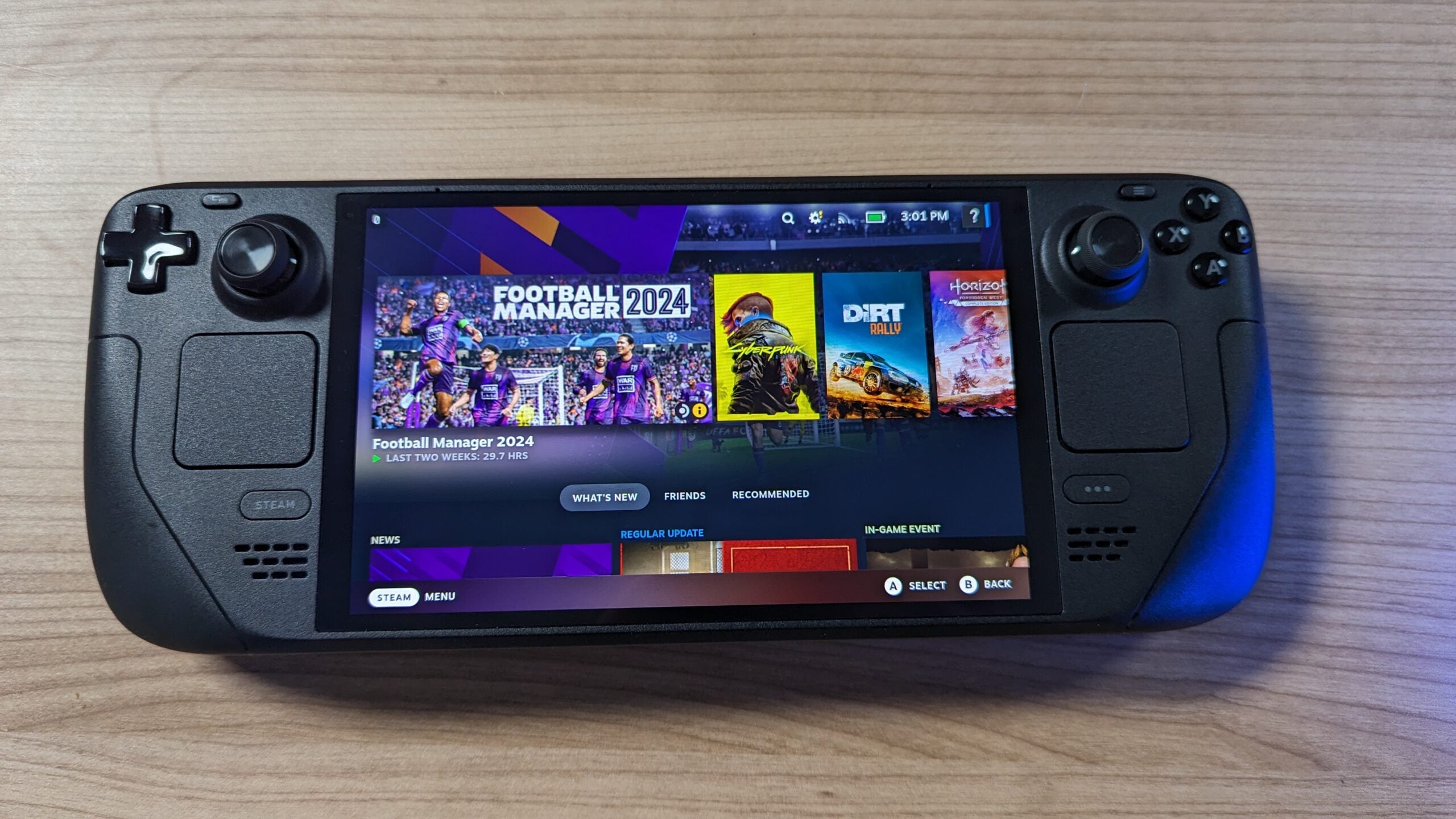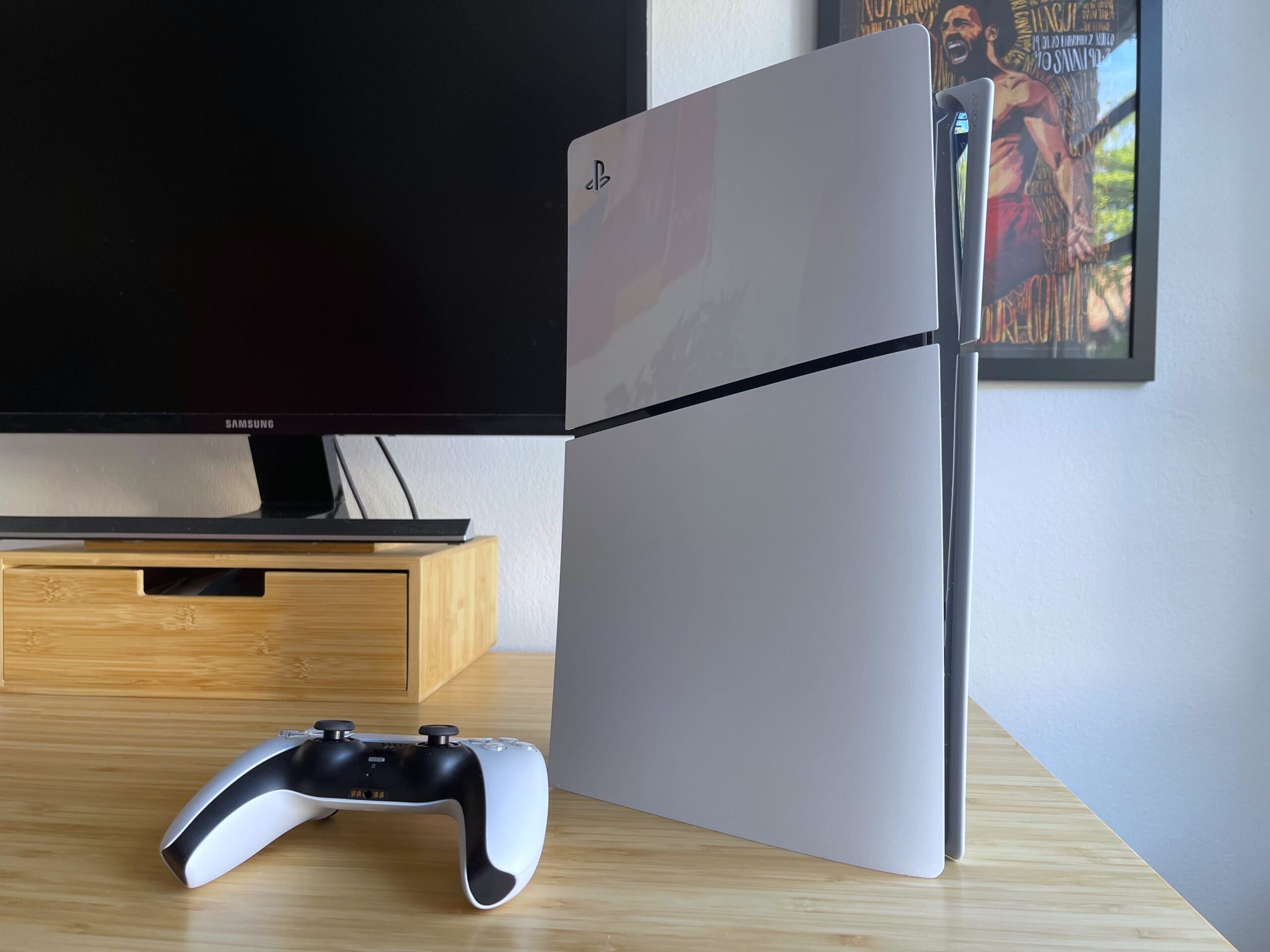HTC Vive Elite XR Review
A fantastic modular design doesn't detract from older internals and a severe lack of popular VR apps.






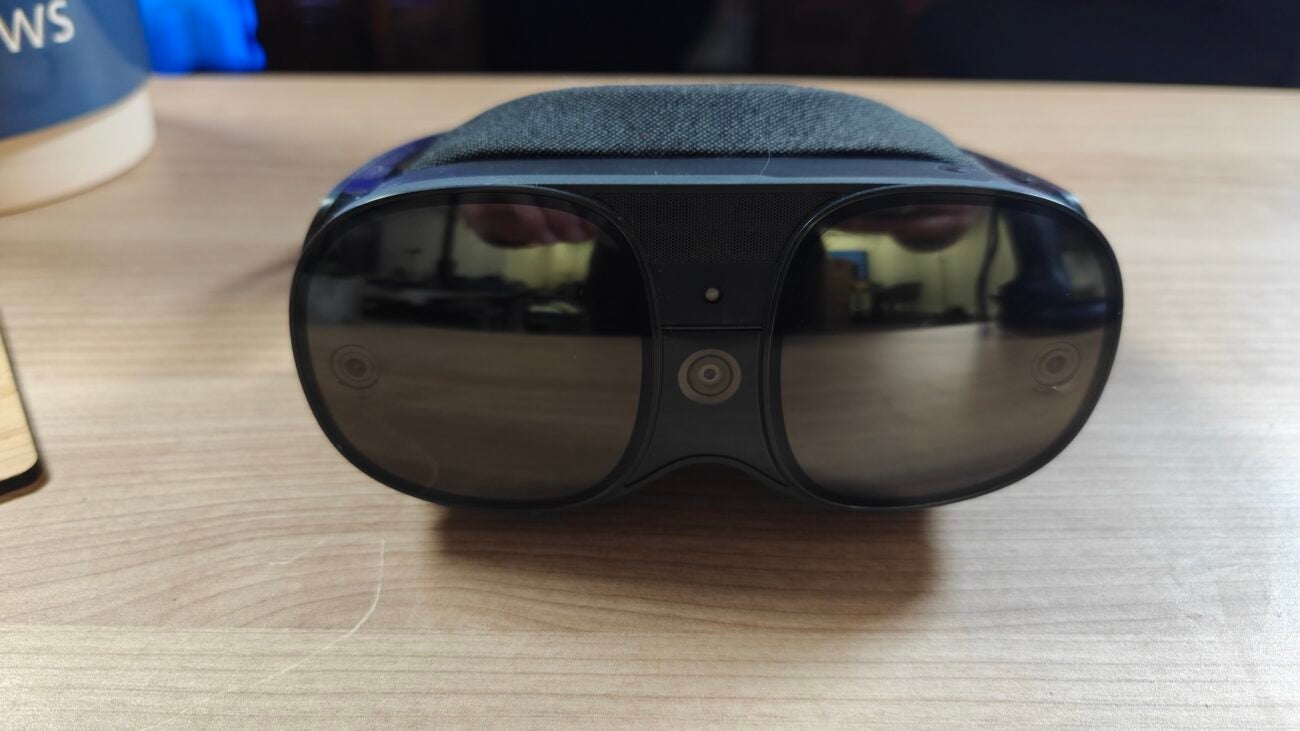
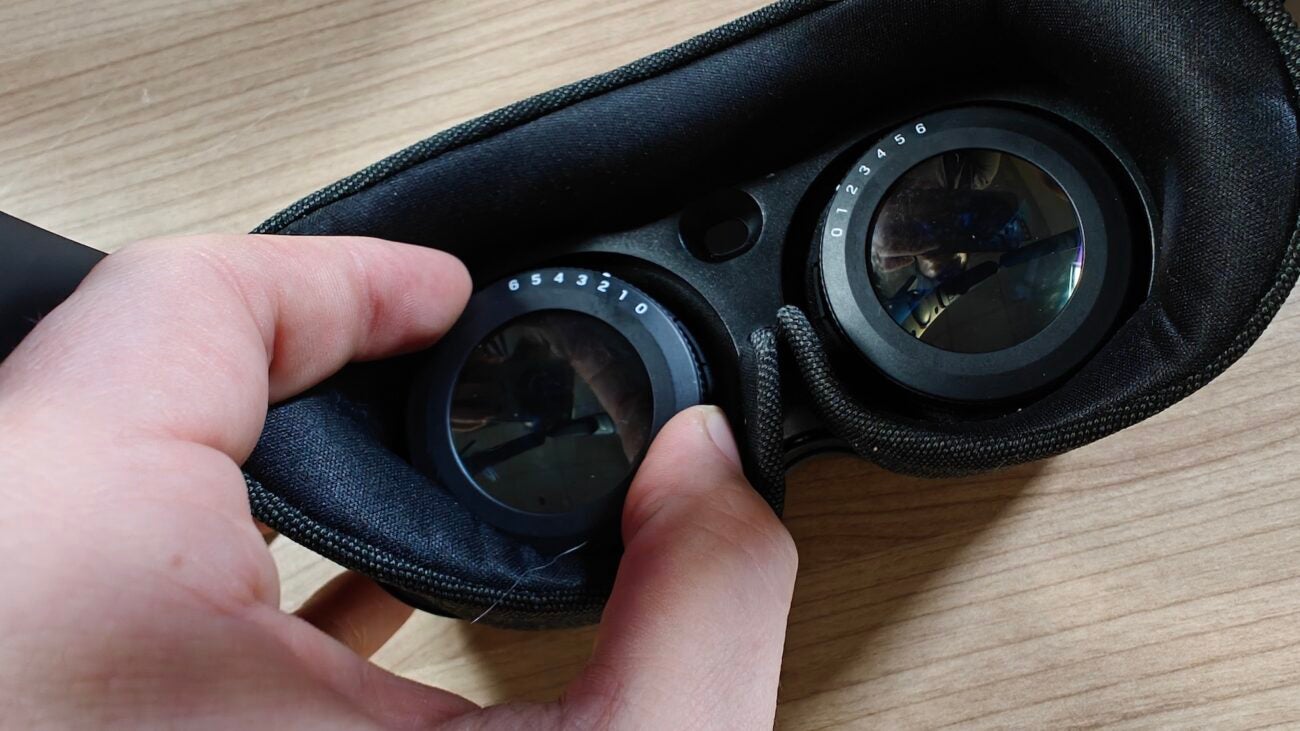


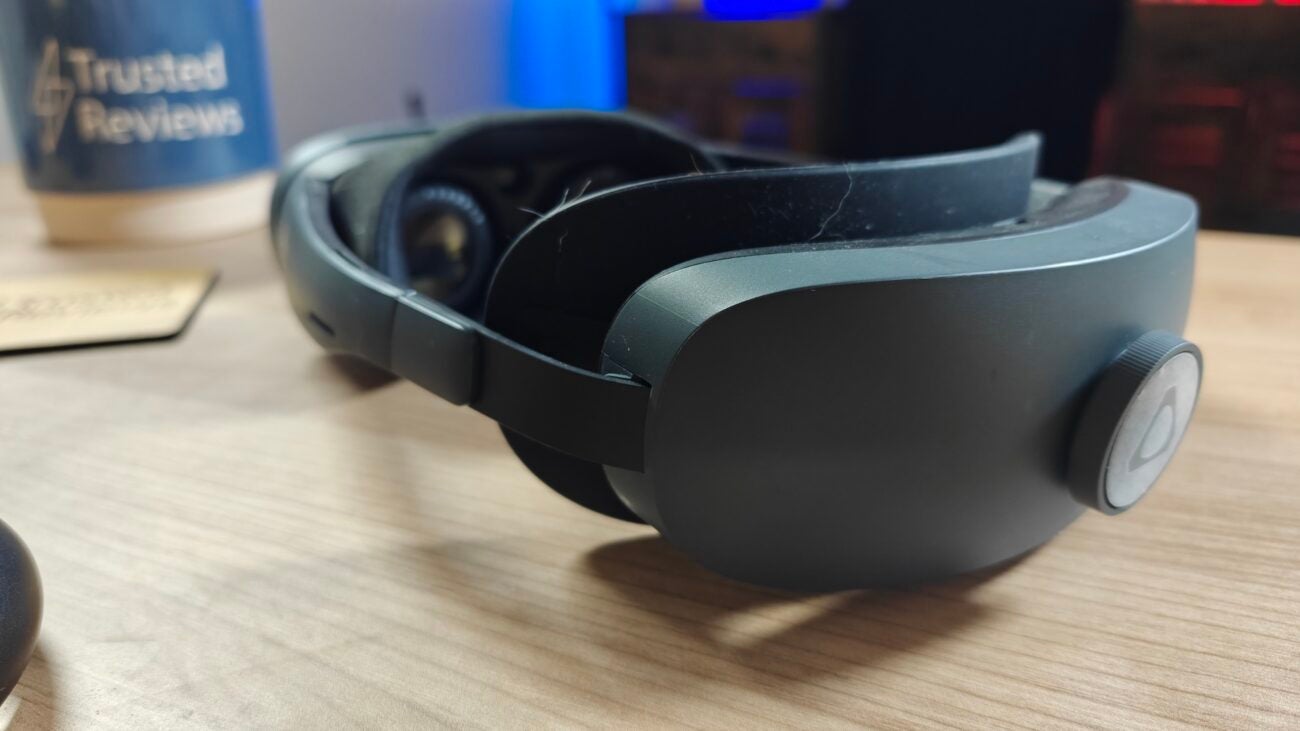


Verdict
The Vive Elite XR scores points for its modular approach to the design of the headset and just how comfortable it is to wear over long periods, but pretty much everything else, from the controllers to the processor to the lack of popular apps on Viveport, makes the Vive Elite XR a tough sell – especially at £999/$1099.
Pros
- Modular design
- Very comfortable to wear
- Lens adjustments for glasses-wearers
Cons
- Large, cheap-feeling controllers
- Woefully underpowered for an ‘elite’ headset
- Severe lack of popular VR apps and games
Key Features
- Modular designThe modular design of the Vive Elite XR means you can take the rear off and wear them as a pair of VR sunglasses.
- Wireless phone mirroringIn an attempt to one-up Meta, HTC offers the ability to wirelessly mirror your phone’s display to your headset.
- Fast chargingThe Vive Elite XR only needs 30 minutes of charge to deliver a full hour’s use.
Introduction
The HTC Vive Elite XR is one of few competitors to Meta’s standalone VR headset collection, offering an alternative to the hugely popular Meta Quest 3 and Meta Quest Pro – so safe to say it has its work cut out.
But while the Vive Elite XR’s modular design allows it to stand out from the competition, that’s about the only element of the headset that can be universally praised. Just about everything else, from the controllers to the processing power, feels somewhat dated.
However, that would’ve been forgiven had the Viveport Store been a little more plentifully stocked with popular VR and MR apps and games, with a woeful collection compared to the might of Meta.
It’s not looking good for the HTC Vive Elite XR, is it?
Design and fit
- Comfortable fit with balanced weight
- Unique modular design
- Glasses-free approach to VR
The HTC Vive Elite XR is an evolution of the Vive Flow headset from 2021, with a number of tweaks to the fantastically modular design that make the Vive Elite XR stand out in the standalone VR market. It’s arguably the strongest point of the headset overall – but I’ll get to that in a bit.
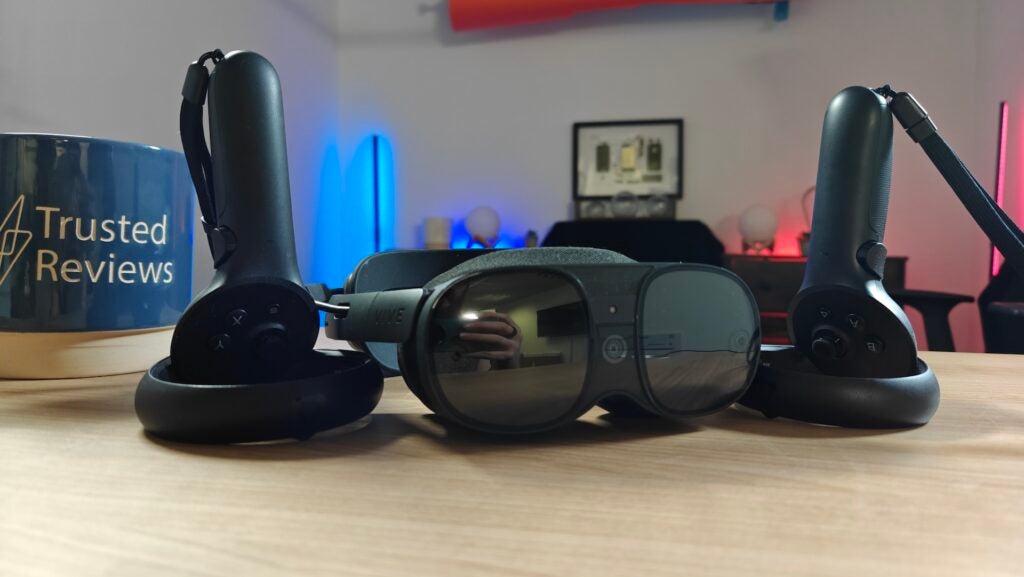
In its standard form, the HTC Vive Elite XR doesn’t look that dissimilar to the Meta Quest Pro, complete with a battery pack at the rear with a high-end crank mechanism to provide the ideal fit – a way better implementation than the fabric strap of the Quest 2 and Quest 3 that helps balance the weight of the headset to make it less front-heavy.
The front of the headsets do differ in terms of look though, with the Vive Elite XR’s large transparent lenses reminding me of a Praying Mantis when donned. Anybody else?
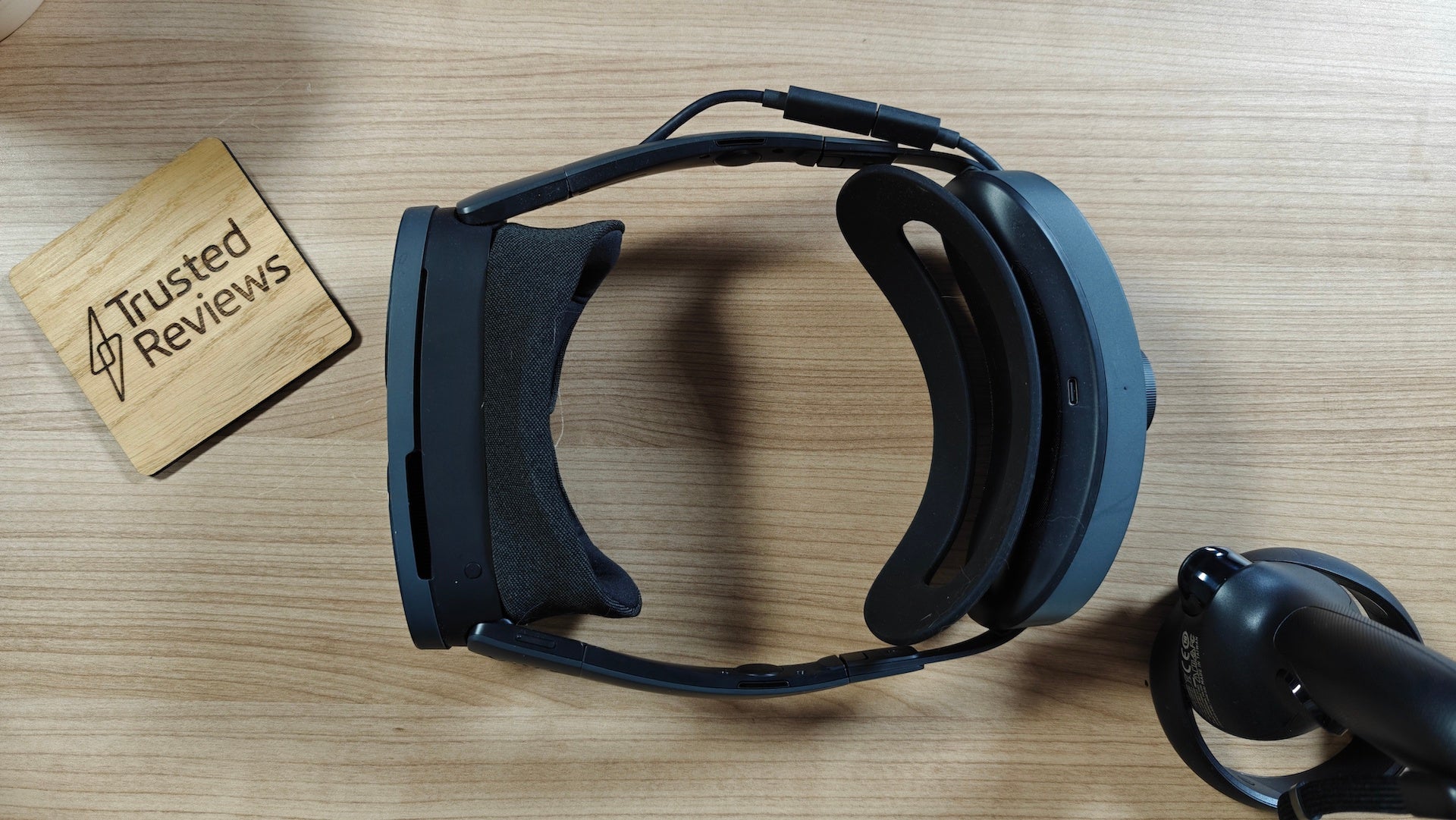
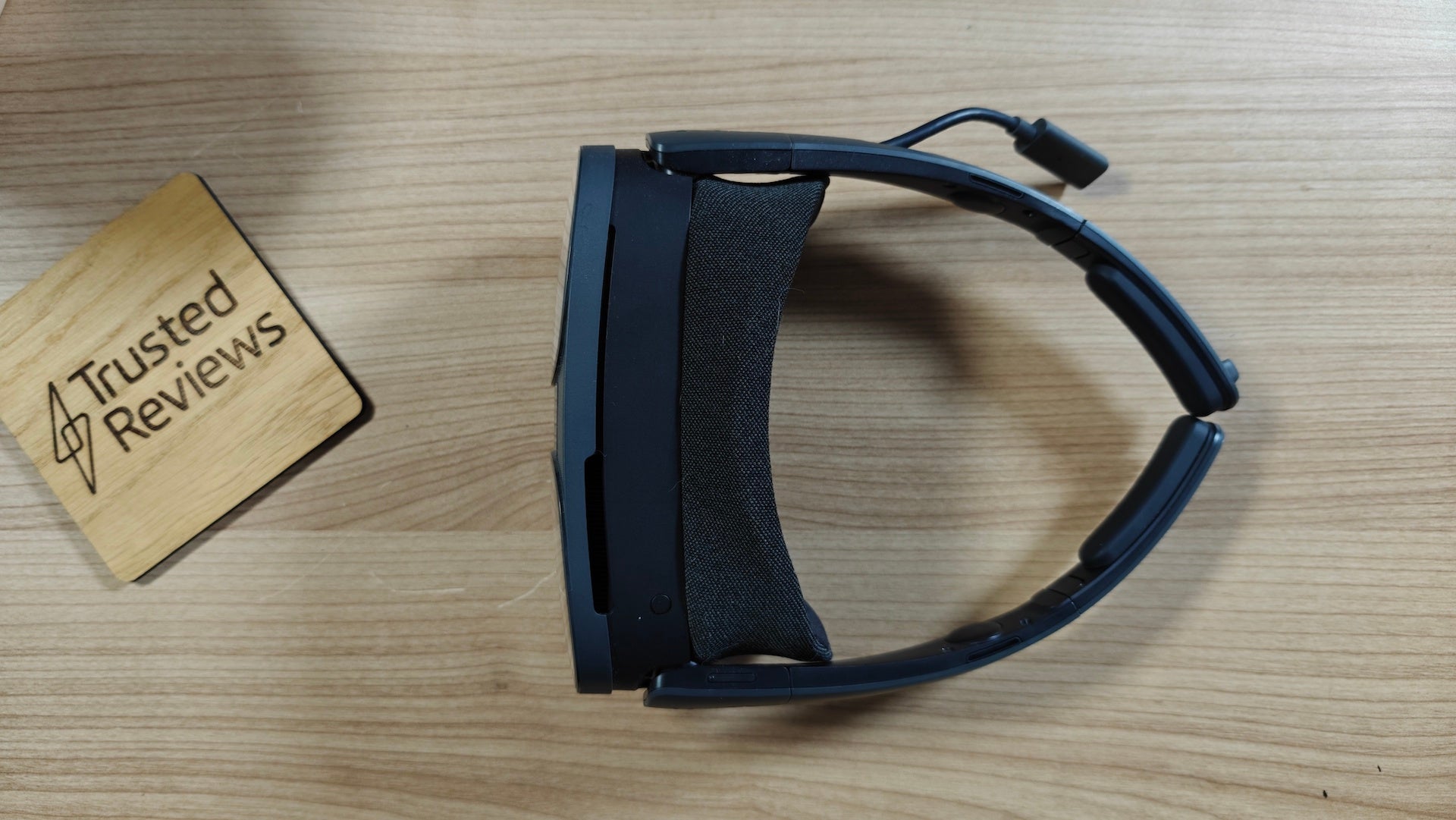
Where the Vive Elite XR separates itself is by literally separating itself from the back of the headset, with users able to switch out the battery pack for a pair of glasses-like plastic stems that transform the Elite XR into a VR-enabled pair of sunglasses. It also more than halves the weight of the headset, down to 273g down from a (not that significant) 625g.
Of course, the headset will need to be tethered to some kind of power source to work, but you can use practically any USB-C device that provides power, from power banks to a USB-C-enabled smartphone with reverse charging capabilities. But the difference is those can sit in a pocket, not on your head, and that makes the VR experience even more comfortable for extended use.
That’s a real boon not only for VR gaming but VR productivity, with a significantly more lightweight and comfortable design than the Meta Quest Pro that could potentially allow for all-day use. The downside is that the headset is less secure on the head than when connected to the battery pack and, thus, is not ideal for gaming or fast movements.
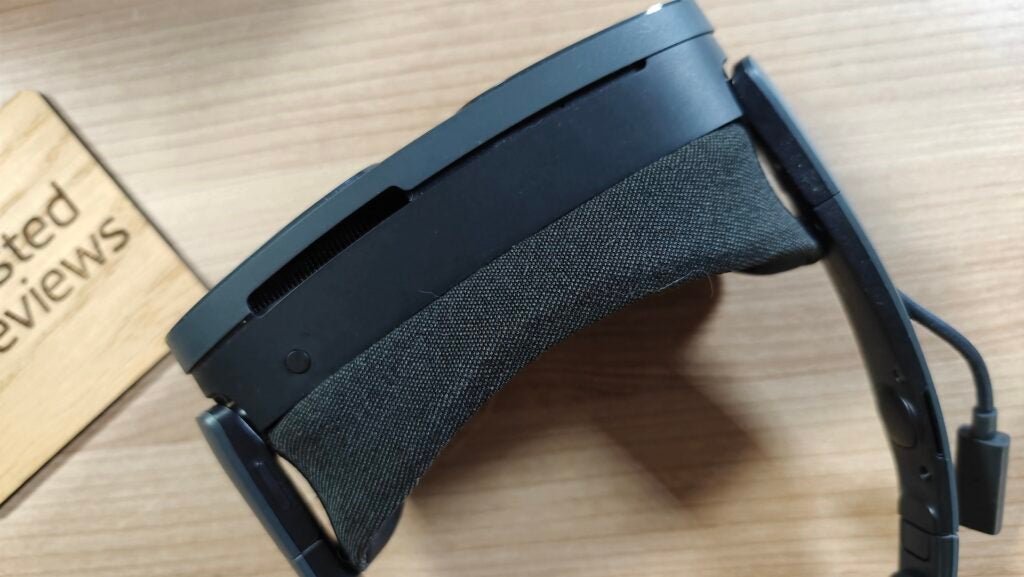
That comfort also extends to the face plate that bridges the gap between the plastic build of the HMD and your face, with a soft fabric material that feels pretty nice when worn. What isn’t so nice, however, is doing VR exercise in Les Mills Body Combat using the headset, as that soft facia turns into a sponge, soaking up all your sweat, and it’s very difficult to clean too.
Vive should also be praised for its glasses-free approach to VR. Rather than selling face plates to accommodate glasses-wearers like myself, which I often find don’t fit my glasses that well, you can adjust the focus of each lens individually from -6 to +6, negating the need to wear glasses at all.
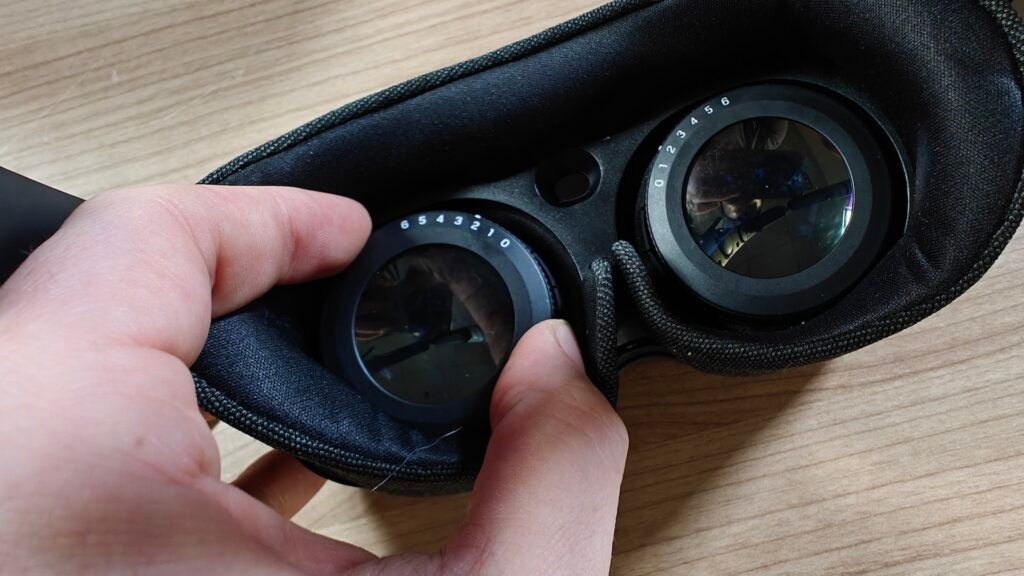
That makes for a much more comfortable VR system, though it’s not ideal if you’ve got particularly strong prescription lenses outside of the range offered by the headset.
Controllers
- Fairly bulky controllers
- Big tracking rings
- Cheap, plastic-y feel
In somewhat stark contrast to the future-thinking, modular design of the Vive Elite XR headset, the accompanying controllers are large, plasticky and generally a bit naff compared to not only the Quest 3 and Quest Pro controllers, but even those that come with the three-year-old Quest 2.
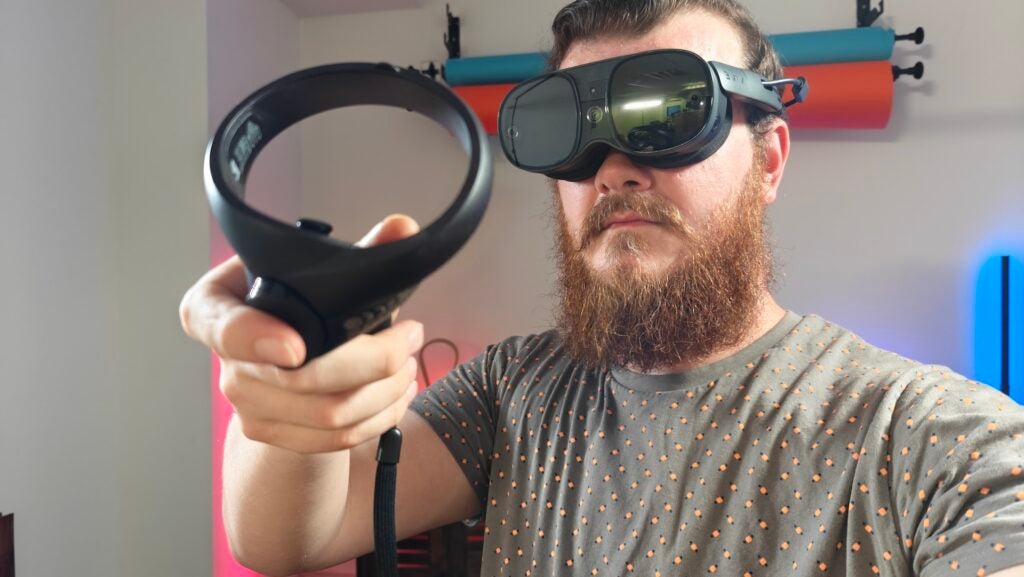
The button layout is pretty standard, comprised of ABXY buttons, two analogue sticks, triggers and grip buttons, but the accompanying tracking rings are pretty substantial – enough to clash together in some VR titles, briefly ruining the immersion I was feeling at the time.
The controllers are also notably longer than the comparably compact and ergonomic controllers of the Quest 3, nor do they boast the built-in tracking tech of the Quest Pro controllers, meaning they can only be tracked when in full sight of the headset.
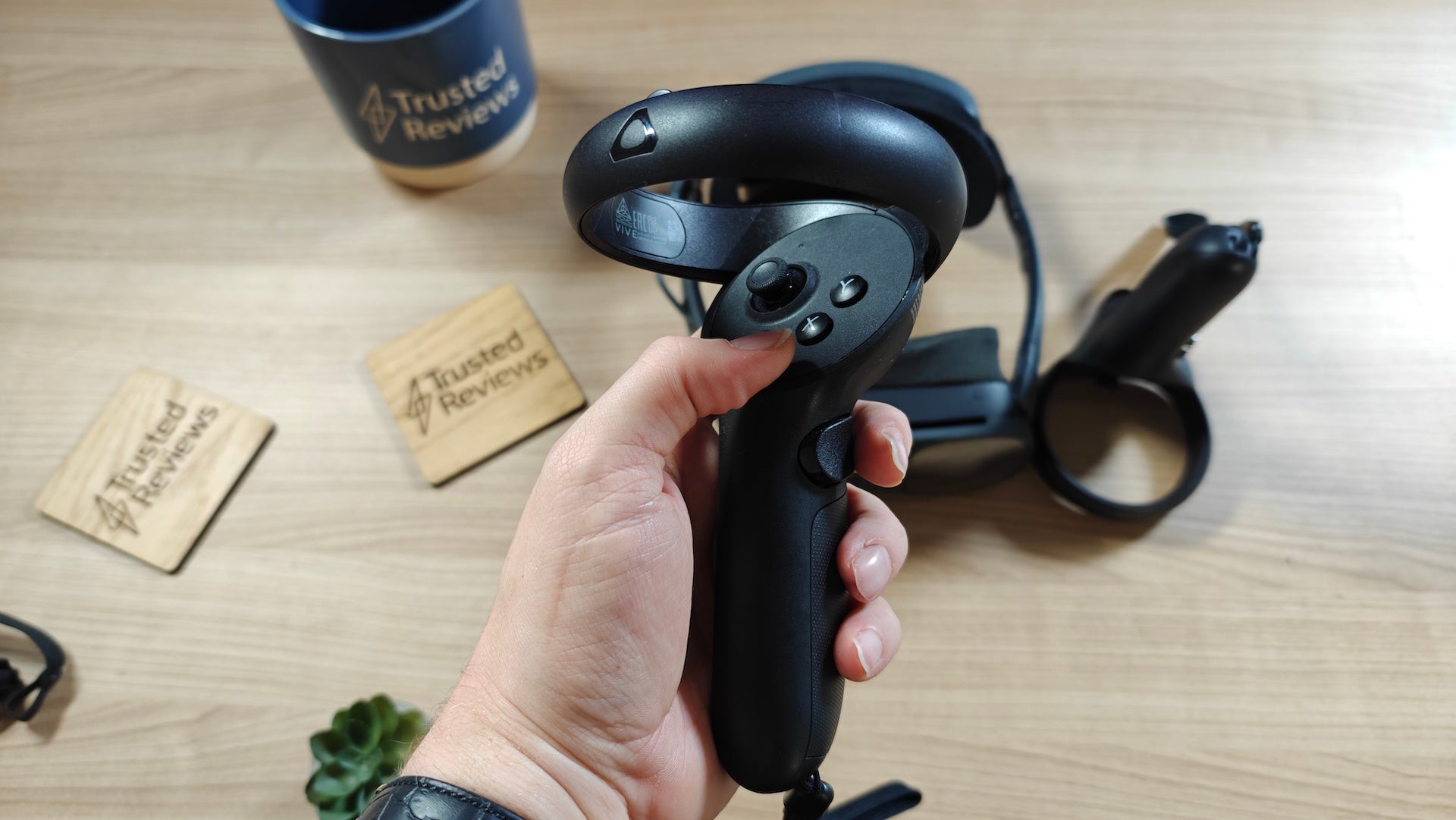
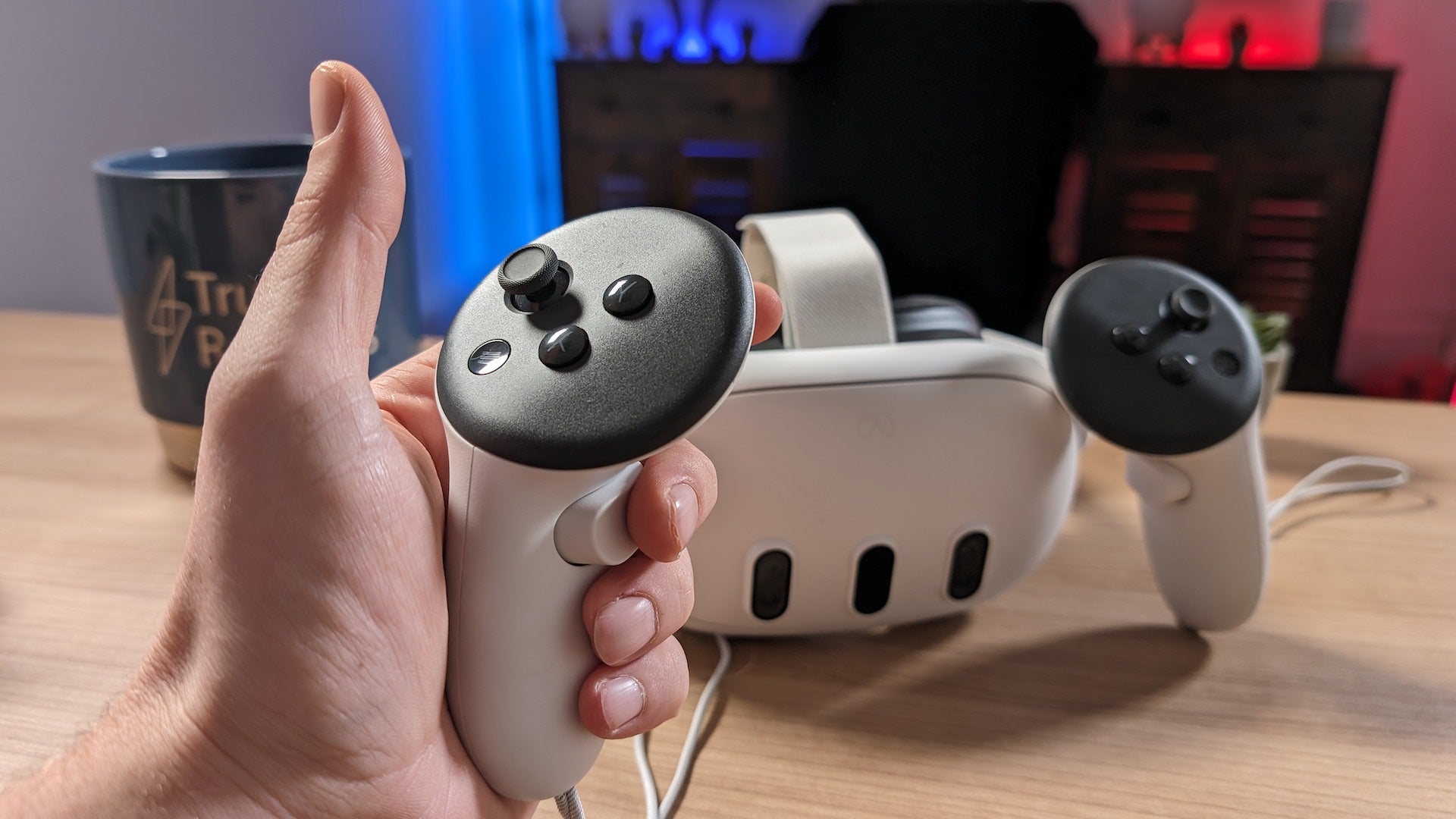
The vibration feedback is also a little dull and mushy compared to the more detailed haptic motors from Meta’s recent headsets – a similar difference in sensation when comparing the PS4’s DualShock controller to the PS5 DualSense controller.
Admittedly, the controllers are a slight step forward from the even bulkier OG Vive controllers that shipped with other recent Vive-branded headsets with a slightly more compact design, but as stated, it’s far from the compact and technically more advanced options offered by Meta’s headsets.
Specs and performance
- Same performance as the £299 Quest 2
- Hand tracking, but no eye or tracking
- Wireless phone mirroring needs a lot of work
The HTC Vive Elite XR’s Snapdragon XR2 chip would’ve been acceptable back in 2020, but in 2023, and especially after the launch of the Meta Quest 3, the chipset is showing its age.
For context, the similarly priced Meta Quest Pro boasts the Snapdragon XR2 Plus chip with a 50% boost to power output and 30% improved thermal performance compared to the Elite XR’s regular XR2, and the gap is only widened when you look at the chipset in the Quest 3.
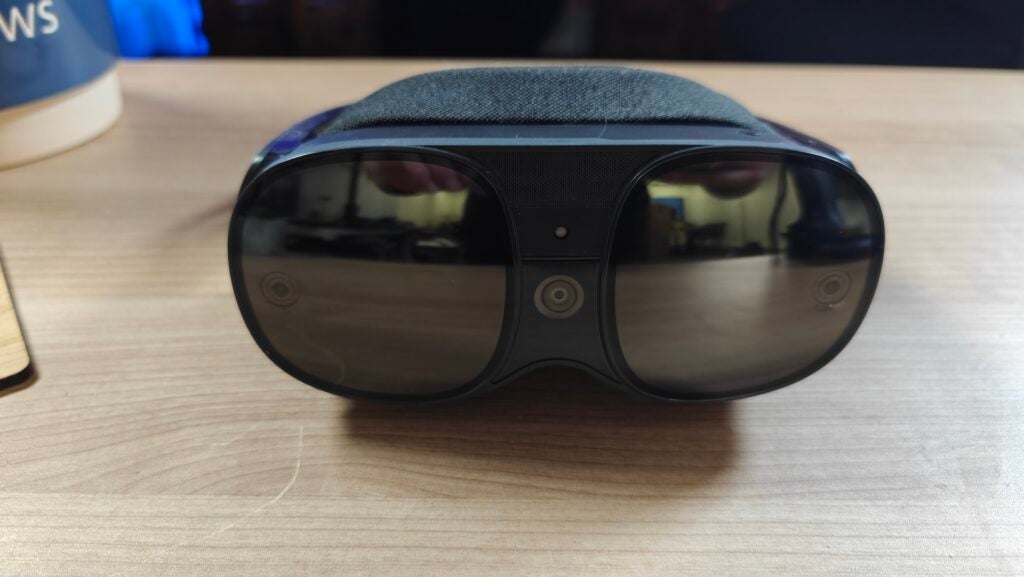
The Quest 3 boasts the brand new Snapdragon XR2 Gen 2 platform that boasts serious gains on the original XR2 chipset, including a 2.5x boost to GPU power with 50% better efficiency and a 33% boost to the CPU that makes it wholly more capable of running high-quality apps and games with better textures at higher resolutions than the Elite XR can. The XR2 chipset is the same as found in the £299 Meta Quest 2.
That should help paint a picture of the experience on offer; while not necessarily a bad one, with apps that run at the maximum 90fps allowed by the headset’s 90Hz LCDs, they’re not quite as complex or graphically impressive as what I’ve seen from other headsets in 2023.
It is more akin to what you’d get from Meta’s entry-level headset than what you’d expect from a premium standalone headset, albeit at a higher resolution, clocking in at 1920 x 1920 per eye. The resolution does help the experience somewhat, with relatively crisp visuals that make reading text much easier than cheaper headsets.
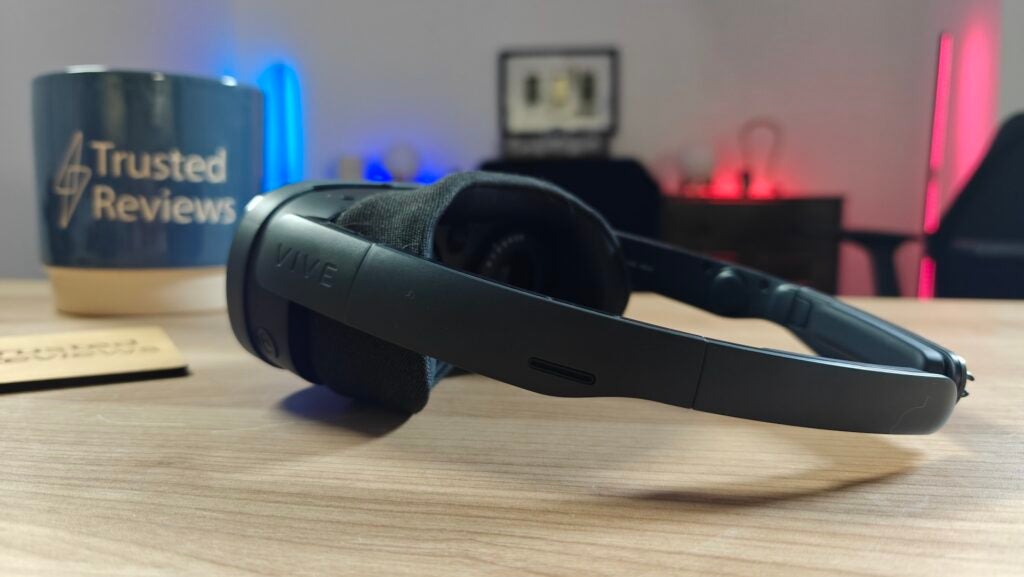
HTC looks to differentiate itself from Meta’s headsets with a pretty cool feature that was first introduced on the HTC Vive Flow – wireless smartphone mirroring. At least, it would be pretty cool if I could get it to work more reliably.
The issue seems to come down to smartphone compatibility, with support for Miracast and HDCP 2.2 or later required to access your mobile OS from the headset. I tried it on several flagship-level phones including the Honor Magic 5 Pro, Xiaomi 13 Pro and the Google Pixel 7, and none worked.
In fact, a glance at HTC’s support page reiterates this point, with very few smartphones officially compatible with the functionality.
It’s an issue that was prevalent on the Vive Flow and it seems HTC hasn’t found a solution with the Vive Elite XR either. I can only wonder why the team didn’t opt for a more straightforward hardware connection, given that you can connect the headset’s USB-C port to your smartphone for power – it’d seemingly remove the restrictions on which phones could use the functionality.
Hand tracking is present and works in a very similar way to that of the Quest 3 and Quest Pro, tracking your hands in the virtual space with point-and-pinch gestures to navigate the UI.

It’s an excellent way to navigate through the OS and more conveniently browse your phone in its wireless mirroring mode, but the big frustration is that vanishingly few apps on the Viveport Store take advantage of HTC’s hand-tracking tech, meaning you’ll more than likely need to pick up those bulky controllers once you select an app to load via hand-tracking.
I’ve also found that it’s not quite as capable as Meta’s option in anything but ideal lighting conditions, with the headset occasionally losing tracking when I attempted a bit of VR in a table lamp-lit room one dark evening.
Hand tracking is a nice-to-have feature, but HTC’s feature set doesn’t expand to more advanced tracking like the face- and eye-tracking of the Meta Quest Pro, which allows for a much more natural social VR experience where it’s easy to pick up on non-verbal communication like smiles, winks and more.
It’s not necessarily a dealbreaker for most users, but it’s something I’d have liked to have seen baked into an ‘Elite’ VR headset that costs the same as Meta’s top-end headset. HTC has claimed that these features will be available via optional add-ons in future, but these are yet to materialise and will undoubtedly hike the price even further.
Game and app availability
- Majority of apps and games run well
- Great attempt at mixed reality
- Severe lack of VR and MR apps and games
The Viveport Store is the main way to get standalone apps on the Vive Elite XR headset. A quick browse and you’ll find several popular apps including Les Mills Body Combat, Richie’s Plank Experience and Virtual Desktop, but this lulls you into a false sense of security as there are some pretty glowing omissions compared to the competing Quest Store.
That includes popular VR games like Beat Saber and Gorilla Tag, along with bigger, longer VR titles like The Walking Dead: Saints & Sinners and Ghost Busters: Rise of the Ghost Lord – and that’s after seven months of the Vive Elite XR being available for purchase. I honestly can’t see the situation getting any better any time soon either.
Sure, many of these apps are available to you if you tether the headset to a gaming PC, but that kind of defeats the purpose of a standalone VR headset.
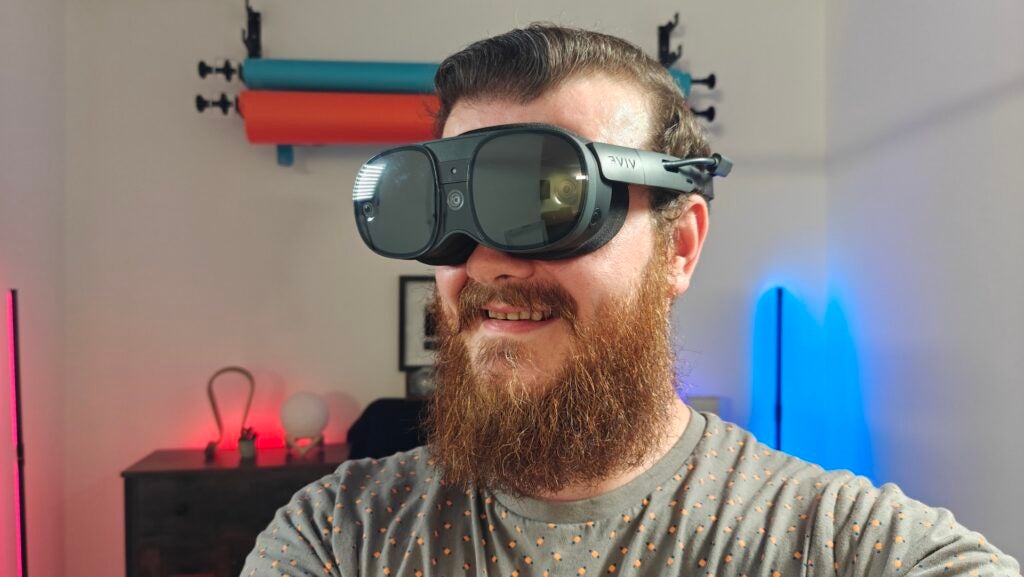
The headset also supports mixed reality apps thanks to its forward-facing colour passthrough cameras, with a surprisingly crisp experience that’s better than the slightly soft interpretation from the Meta Quest Pro and one without the extreme fisheye distortion of the Pico 4. It was clear enough for me to walk around my room without bumping into furniture, at the very least.
I’d argue that on MR visuals alone, the Elite XR can compete with the new Quest 3, though Meta’s new headset comes with hardware like a depth sensor that makes it much easier to map the space around you, even incorporating elements like chairs and tables into the MR experience – HTC doesn’t do this just yet.
The bigger problem for HTC is the availability of said MR apps. Just like with regular VR apps, the selection is pretty barebones at the moment – and when you consider that the Meta Quest 3 already had 50+ dedicated MR apps within a month of its release, it seems that Meta again has the upper hand.
Battery life
- 2-hour battery life
- Charges via USB-C
- 1 hour of use with 30 minutes of charge
Battery life – when the battery pack is connected, of course – is pretty consistent with other standalone VR headsets on the market, offering around 2 hours of use before it’ll need a top-up via USB-C. That allows it to last a little longer than the Meta Quest Pro’s 1hr 30 minutes, although it does fall slightly behind the Quest 3’s 2-3 hour battery life claims.
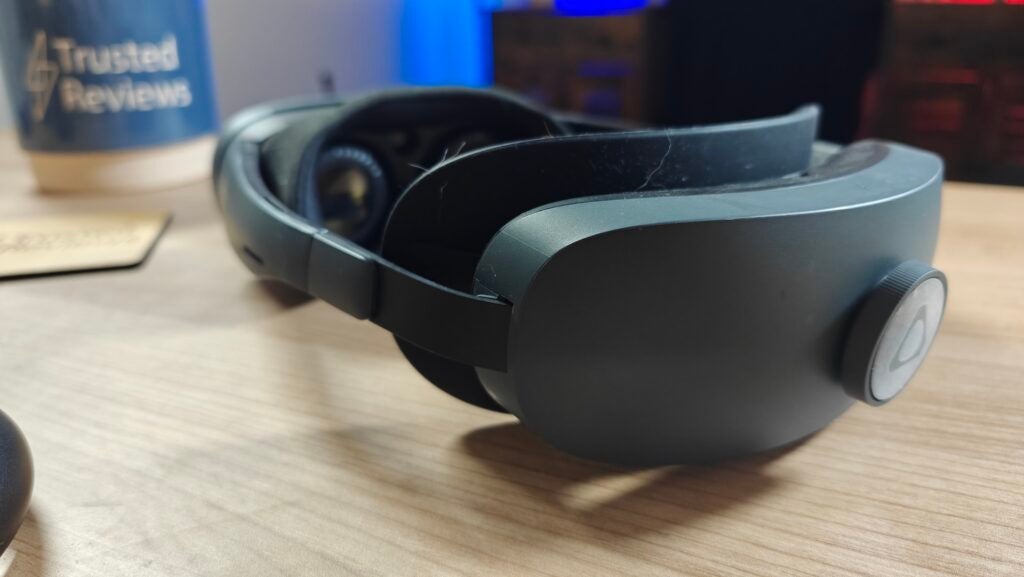
Still, the modular design of the headset allows you to swap the official battery head strap out for a generic USB-C power bank that can sit in the pocket and further extend battery life, as can your smartphone in a pinch. That could make it a slightly more tempting option, particularly for long travels without a plug nearby.
Charging is pretty fast too, achieving an hour of use after just 30 minutes of charging from the provided USB-C power brick, though a full charge will take around 2 hours.
Latest deals
Should you buy it?
You want a modular VR headset
The ability to remove the battery pack and turn the headset into something resembling VR glasses is rather unique in the standalone VR market.
You want the best VR experience possible
With an old chipset, clunky controllers and a woefully small library of standalone apps and games to choose from, the Vive Elite XR is beaten by even cheap headsets like the £299 Meta Quest 2.
Final Thoughts
I love what HTC has done with the design of the Vive Elite XR, boasting a comfortable design that’s also modular, with very different focuses for each configuration. It also boasts unique features like focus adjustment for glasses-wearers and powering the headset via your phone’s USB-C port.
However, that’s about all the HTC Vive Elite XR does well. The Snapdragon XR2 chipset is woefully underpowered not only compared to similarly premium headsets like the Meta Quest Pro, but even the Meta Quest 3, which comes in at just over half the price.
But even that could’ve been somewhat forgiven if HTC had managed to get a handle on VR and MR content, both of which are severely lacking on the Viveport Store, especially when compared to Meta’s standalone VR headsets.
It was a great attempt at a standalone VR headset, then, but sadly, I can’t see any reason for consumers to go for the HTC Vive Elite XR over the Quest 3.
How we test
When testing a VR headset, we make sure to try out a variety of games and apps. We evaluate various aspects, such as the design, fit, screen quality, battery life and the feature set.
Used for a month
Tested VR apps and games
FAQs
Yes, and it’s one of the better implementations of the tech, though there’s a lack of MR apps to take advantage of it.
While you’ll get a USB-C cable in the box, you’ll have to supply your own charging brick.

